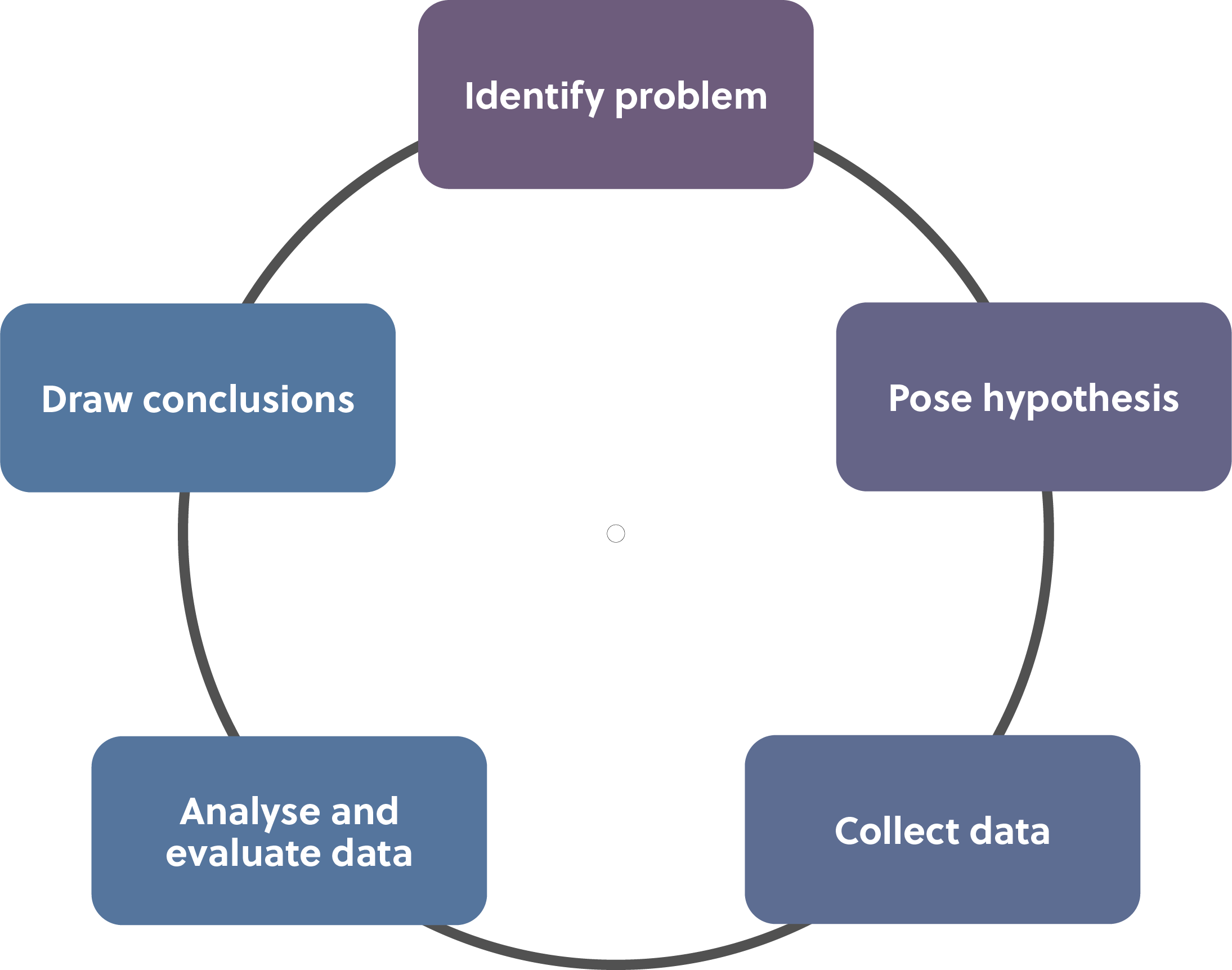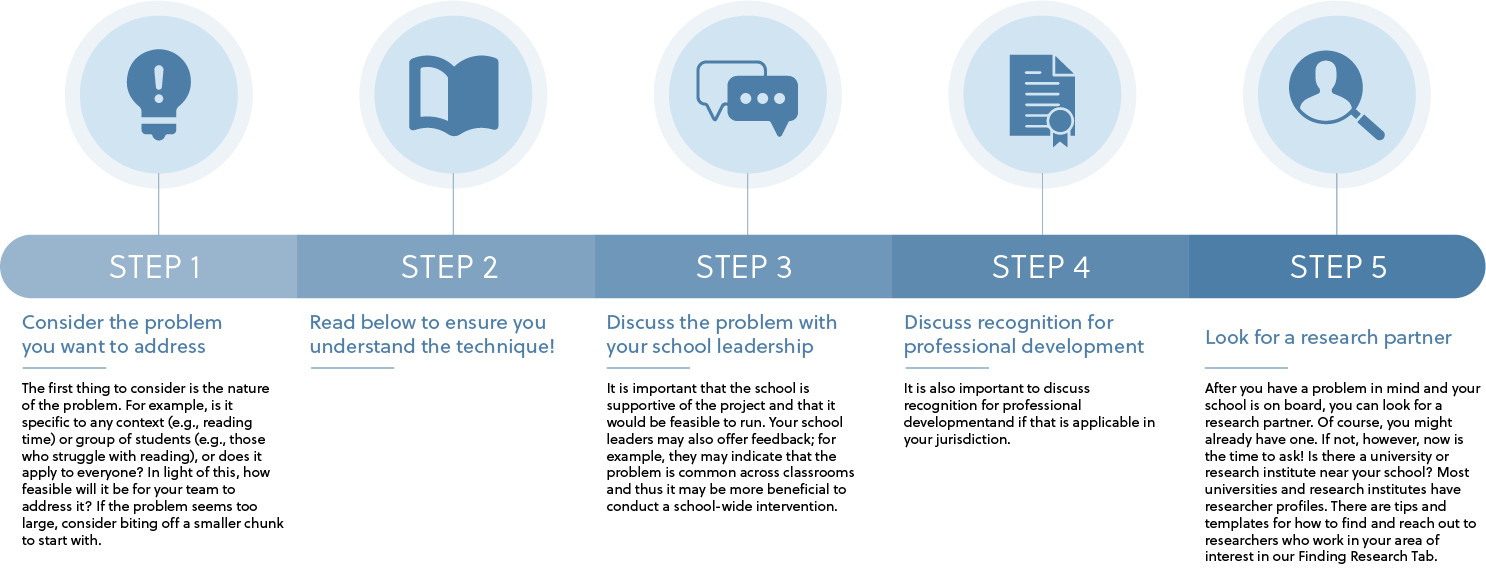Action Research
What are Action Research and Design-Based Research?
Action Research and Design-Based Research are popular approaches for teachers and researchers to conduct research in partnership with one another. Both approaches:
- Address a practical problem in a specific context, such as the teacher’s school or classroom.
- Allow teachers to lead the implementation of the research, often an intervention
- Developing a sustainable solution for the practical problems that teachers are facing
Action and Design-based approaches draw on teachers’ rich knowledge of their classroom and school, as well as researchers’ deep knowledge of theory and methods.

This sounds like something I want to do – how can I get started?

The first thing to consider is the problem that you want to address. Consider the nature of the problem. For example, is it specific to any context (e.g., reading time) or group of students (e.g., those who struggle with reading), or does it apply to everyone? In light of this, how feasible will it be for your team to address it? If the problem seems too large, consider biting off a smaller chunk to start with.
Read below to ensure you understand the technique!
Discuss the problem with your school leadership. It is important that the school is supportive of the project and that it would be feasible to run. Your school leaders may also offer feedback; for example, they may indicate that the problem is common across classrooms and thus it may be more beneficial to conduct a school-wide intervention. It is also important to discuss recognition for professional development and if that is applicable in your jurisdiction.
After you have a problem in mind and your school is on board, you can look for a research partner. Of course, you might already have one. If not, however, now is the time to ask! Is there a university or research institute near your school? Most universities and research institutes have researcher profiles. There are tips and templates for how to find and reach out to researchers who work in your area of interest in our Finding Research Tab.
How is it different from other research?
One key feature that makes Action Research and Design-Based Research distinct from more traditional research is that it is co-designed. Both see researchers and teachers as partners in the research process.
Researchers and teachers mutually agree on the:
- Problem being investigated
- Methods used to address the question
- Criteria for effectiveness of the research, program, and/or intervention
- Adjustments to implementation
- Role of researcher and teacher
What are the core-principals of Action/Design Based Research
There are several core principals of Action Research and Design-Based Research. As above, Action Research and Design-Based Research are situated in real educational contexts and are a collaborative partnership between researchers and teachers.
Action Research and Design-Based Research are intended to test new pedagogical approaches and solutions to practical problems in schools and classrooms. This typically takes the form of a small intervention to address the problem. These interventions are different to the kind you might know about in Randomised Control Trials: here, they simply mean a single change in practice. For example, this might take the form of a new learning activity, assessment task, administrative activity or change, or technological intervention.
Action/design based research often takes a mixed methods approach, meaning that multiple forms of data are collected. This may include collecting evidence of students’ work, surveys of student experiences, recording teaching sessions, and other data that can provide information about the effectiveness and success of interventions. Testing the intervention and data collection will go through multiple iterations. This means that the intervention will be tested and data will be collected multiple times. This offers continuous opportunities to refine and evolve the design principles of the intervention.
This means teachers and researchers are able to address key questions that ensure the sustainable success of the project; these questions can be:
- What works?
- For whom does it work?
- When does it work?
- Do we know how it works and why?
- How do we make it sustainable (and stronger)?
- Are there scalable elements?
- Under what conditions does the scaled-up version work?
- How do we make it more widely available/adopted? Is this appropriate
What are the benefits of Action/Design Based Research?
There are multiple benefits of Action/Deign based research to students, educators, researchers, and the field of education.
Action/Design based research:
- Has strong ecological validity. Said another way, action/design based research is able to authentically and effectively address a problem because it was developed and conducted in the relevant context (e.g., classroom, school, after-school program).
- Develops sustainable solutions. The key goal of action/design based research is to develop a solution to a practical problem faced by educators. Because teachers are co-leaders in the project, the solution can be designed to be sustainable for teachers to consistently implement overtime, even after the research process has ended.
- Supports teacher ownership, autonomy, and professional development. Teachers co-design every aspect of the research. This allows them to showcase their rich knowledge of the strengths and challenges in their classroom, as well as effective teaching practices. Action/design based research provides teachers an opportunity to develop solutions that work for them and their students.
- Is methodologically rigorous. The co-designed nature of action/design based research ensures that the research teams uses appropriate and rigorous methods. This is critical to ensuring that the conclusions drawn from the research are accurate and that the solution is effective in the long-term.
Examples of Action/Design Based Research in Australia
Australia has developed a robust culture of action/design based research. The Australian Institute for Teaching and School Leadership promotes action/design based research as an excellent opportunity for professional learning. Examples of successful action/design based research projects are highlighted by the Association for Independent Schools in NSW, which offers support for teachers to conduct this research in their classroom and school.